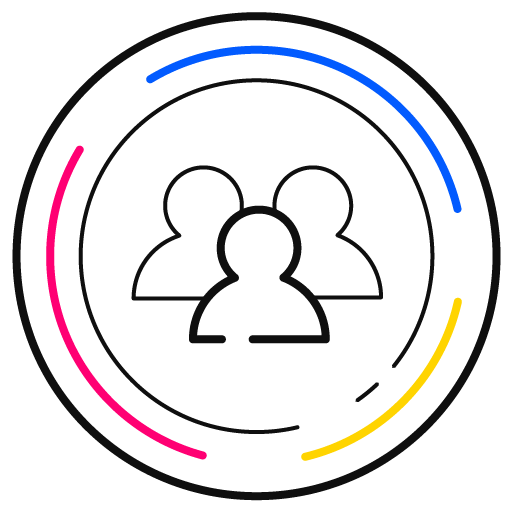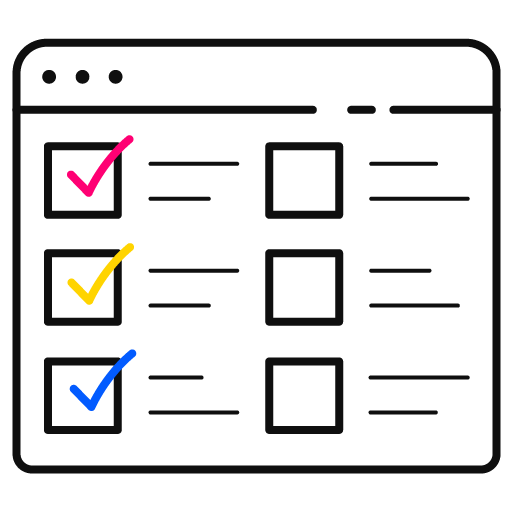Industry Knowledge
Do I Need CX Transformation? A Comprehensive Guide
Learn all about customer experience transformation: fundamentals, benefits, upcoming trends, and more.
Picture this: You're a bustling enterprise, navigating tasks from market dynamics to customer service. Wouldn't a streamlined strategy to enhance your customer experience be a game-changer? This is what CX transformation brings to your plate—a winning strategy for business success.
Whether budding start-ups or established corporations, the scope of customer experience transformation cuts across all. While the process can be complex, every business can gain from it.
What is CX Transformation?
Essentially it refers to the strategic shift businesses undertake to revolutionize their customer experiences in line with ever-evolving technology and changing customer needs. It requires a total restructuring of the business-customer interaction model, which goes beyond the mere adoption of new technology.
CX transformation is not a one-time event. Rather, it is an ongoing adaptive process that responds to emerging customer habits, market trends, and technological advancements. Despite the high-tech revolution, maintaining a human touch is crucial. Customers still value authenticity and genuine human interaction, which requires a precise balance of high-tech and high-touch approaches in the customer experience transformation journey.
What is Customer Experience?
Customer Experience (CX) encapsulates all customer interactions with a business, from first contact to after-sales service. It goes beyond product quality, ensuring a seamless, unique, and client-specific journey to inspire loyalty. The connection between digital transformation and customer experience is intrinsically linked, and here's why:
CX encompasses a variety of factors that shape how customers perceive a business, ranging from customer service and branding to sales methodology, pricing, product delivery, and post-purchase support.
In today's world, consumers are well-informed, technologically savvy, and have high expectations. To meet these evolving needs, businesses increasingly adopt digital tools such as customer relationship management (CRM) systems, AI-powered chatbots, and data analytics. This digital transformation is helping to create personalized interactions, multichannel presence, and swift responses.
However, it's important to prioritize seamless, top-tier experiences at every touchpoint in a digital strategy. While technological support is crucial, digital transformation should always keep a customer-centric focus. This highlights the close relationship between digital transformation and customer experience.
What are the Building Blocks of a CX Transformation Framework?
A smooth customer journey is anchored in a robust customer experience transformation framework. This, comprising several key components, facilitates a systematic and strategic approach to enhancing the customer experience. Here are the core building blocks:

Customer Understanding
Knowing your audience is the first step. This understanding is garnered from different sources, including customer demographics, behavior patterns, engagement analytics, and feedback. It also involves segmenting your customers into groups based on their needs and preferences.

Customer Journey Mapping
Once you understand your customers, the next step is to map out their journeys. Every interaction between the customer and the business should be analyzed and documented. The goal is to identify potential roadblocks and visualize customers’ needs to improve overall customer experience.

Emotional Engagement
CX isn't merely about transactions; it's about creating emotional connections with customers. Every interaction should be designed to resonate with customers emotionally and create a memorable experience.

Voice of the Customer (VoC)
Collecting and analyzing customer feedback across various touchpoints is critical. VoC allows businesses to gain insights into customer perceptions, expectations, and preferences, enabling them to make informed decisions.

Omnichannel Experience
Today's customers interact with businesses across multiple channels. An effective CX framework seamlessly integrates all these channels to provide a consistent experience.

Measurement & Analytics
Finally, measurement is essential to evaluate the effectiveness of CX efforts. Regular measurement and analysis provide insights into what's working and what's not and support continuous improvement.
What are the Benefits of CX Transformation?
Transforming customer experiences is more than just an operational shift—it's a strategic move that can significantly elevate a business's success and longevity across all industries. Other benefits include:

Increased Customer Loyalty
A positive and consistent customer experience, especially in retail customer experience, cultivates trust and engagement, leading to higher customer loyalty. Loyal customers are more likely to make repeat purchases and be brand ambassadors, promoting your business through word-of-mouth marketing.

Boosted Revenue
A superior customer experience translates into higher customer satisfaction, increasing customer retention and revenue growth. Research shows satisfied customers are likely to upgrade or add services and make referrals.

Improved Customer Insights
CX transformation enables businesses to gather and analyze valuable customer data. These insights provide a greater understanding of customer behavior and preferences, which can guide the development of new products and customer experience strategies.

Enhanced Brand Reputation
Businesses that provide excellent customer experiences enjoy a strong brand reputation. This reputation attracts potential customers, leading to business growth.

Competitive Advantage
A solid customer experience transformation strategy can be a significant differentiator in an increasingly crowded market. It allows businesses to stand out and capture a larger market share.

Operational Efficiency
Digital technologies used in CX transformation streamline operations and increase efficiency. Automation of routine tasks frees up time for staff to focus on more complex issues and improve overall productivity.
CX Trends for 2024 and Beyond
As we move towards 2024 and beyond, there are upcoming trends that shape customer experience:

Synthetic Customers
Advancements in technology such as AI and machine learning have paved the way for the emergence of "Synthetic Customers." These digital replicas mimic customer behavior and purchasing patterns, enabling businesses to accurately predict customer needs. This trend is gaining momentum in various sectors and applications including customer experience in banking.

Voice Commerce
By enabling users to order products and services using only their voice, businesses can provide a seamless, hands-free shopping experience that meets these consumer demands.

Sentiment-Driven CX
Sentiment-Driven CX employs AI and machine learning to understand customer emotions and sentiment in real-time across all touchpoints. This detailed analysis allows companies to provide tailored experiences, swiftly address issues, and build substantial emotional connections with customers.
How to Launch Your CX Transformation
Kicking off a CX transformation can be a game-changer for any business. It's about redefining customer relationships and powering up growth. But how do you hit the ground running? Here's a simplified road map:
-
Step 1 - Define Your Purpose and GoalsClearly outline your business's core purpose and overarching goals. This ensures that your CX transformation efforts are aligned with your broader business strategy, driving meaningful initiatives that ultimately lead to your primary business aims.
-
Step 2 - Understand Your CustomersThe second step in your CX transformation journey is understanding your customers intimately. Garner insights from customer demographics, behavior patterns, engagement analytics, and direct feedback. This fundamental understanding will inform every other aspect of your CX strategy.
-
Step 3 - Map Your Customer JourneyWith a clear understanding of your customers, the next step is to map their journeys through all touchpoints with your business. The blueprint of these interactions will offer valuable insights into areas of potential improvement, allowing seamless experiences for your customers.
-
Step 4 - Establish a Robust Measurement SystemThe fourth step is to measure the impact of your CX initiatives. Implement a system to track key performance indicators (KPIs) such as customer satisfaction (CSAT), net promoter score (NPS), and customer effort score (CES) to assess the effectiveness of your efforts.
-
Step 5 - Ensure Governance for Ongoing RefinementWith a clear understanding of your customers, the next step is to map their journeys through all touchpoints with your business. The blueprint of these interactions will offer valuable insights into areas of potential improvement, allowing seamless experiences for your customers.
Metrics offer invaluable insights into the effectiveness of your current practices and highlight improvement areas. Remember, the goal of a CX transformation is continuous improvement. Consistent measurement serves as a guiding compass on this journey, especially in areas highly dependent on customer feedback, such as customer experience in hospitality.
Start Your Customer Experience Transformation With Us
Transformation can be daunting, especially when it involves customer experience services. However, partnering with a reliable company like TaskUs can make all the difference. We offer cost-effective, technology-driven solutions that combine human expertise with cutting-edge technologies like Generative AI. This allows Us to provide world-class customer experience services that improve customer satisfaction and catalyze business growth.
With our extensive global support and reach, we promise to deliver ridiculously good customer experiences across various markets. By partnering with Us, you're not just navigating change, you're navigating towards the evolution of customer experience.
References

We exist to empower people to deliver Ridiculously Good innovation to the world’s best companies.
Services







